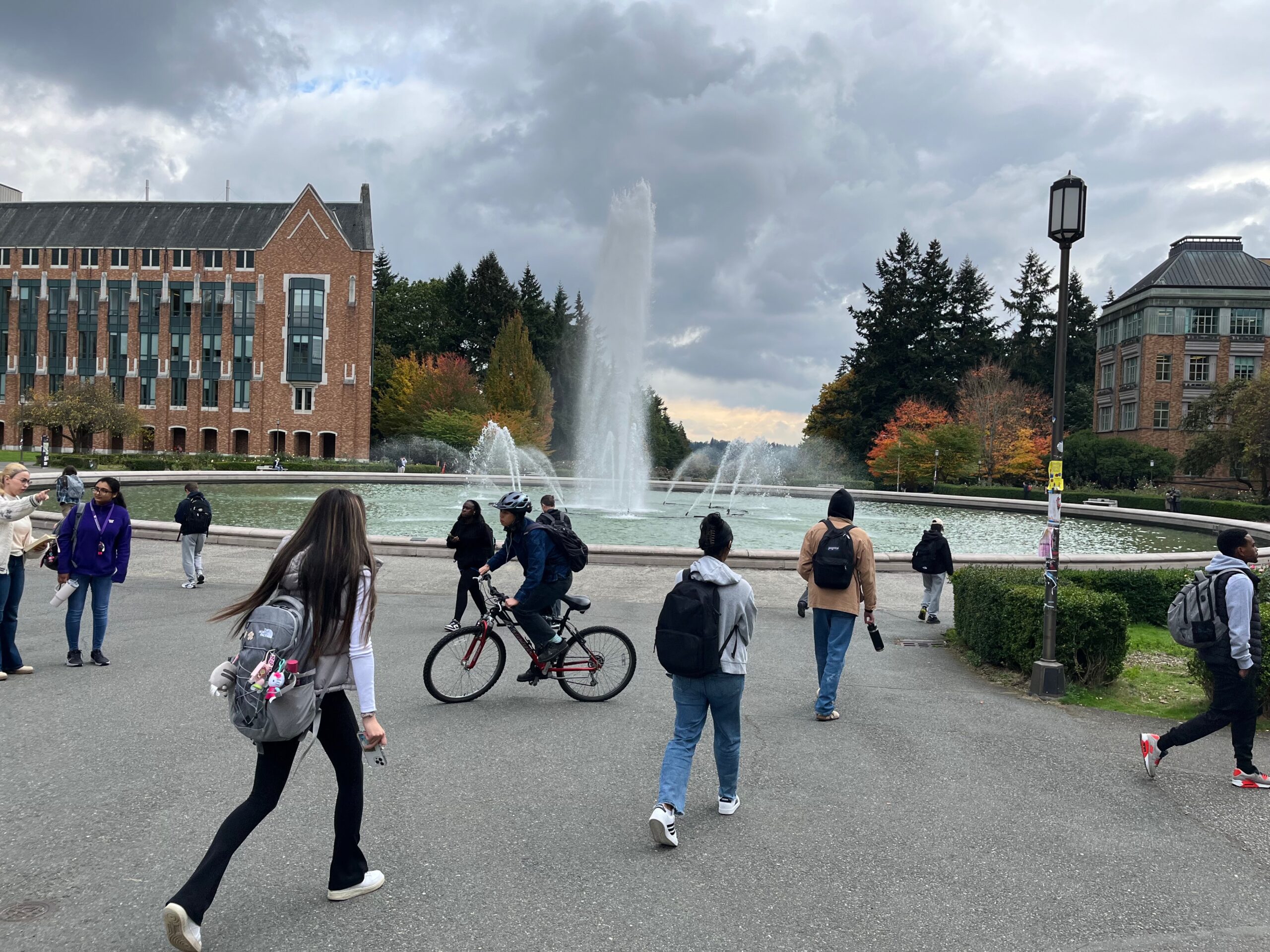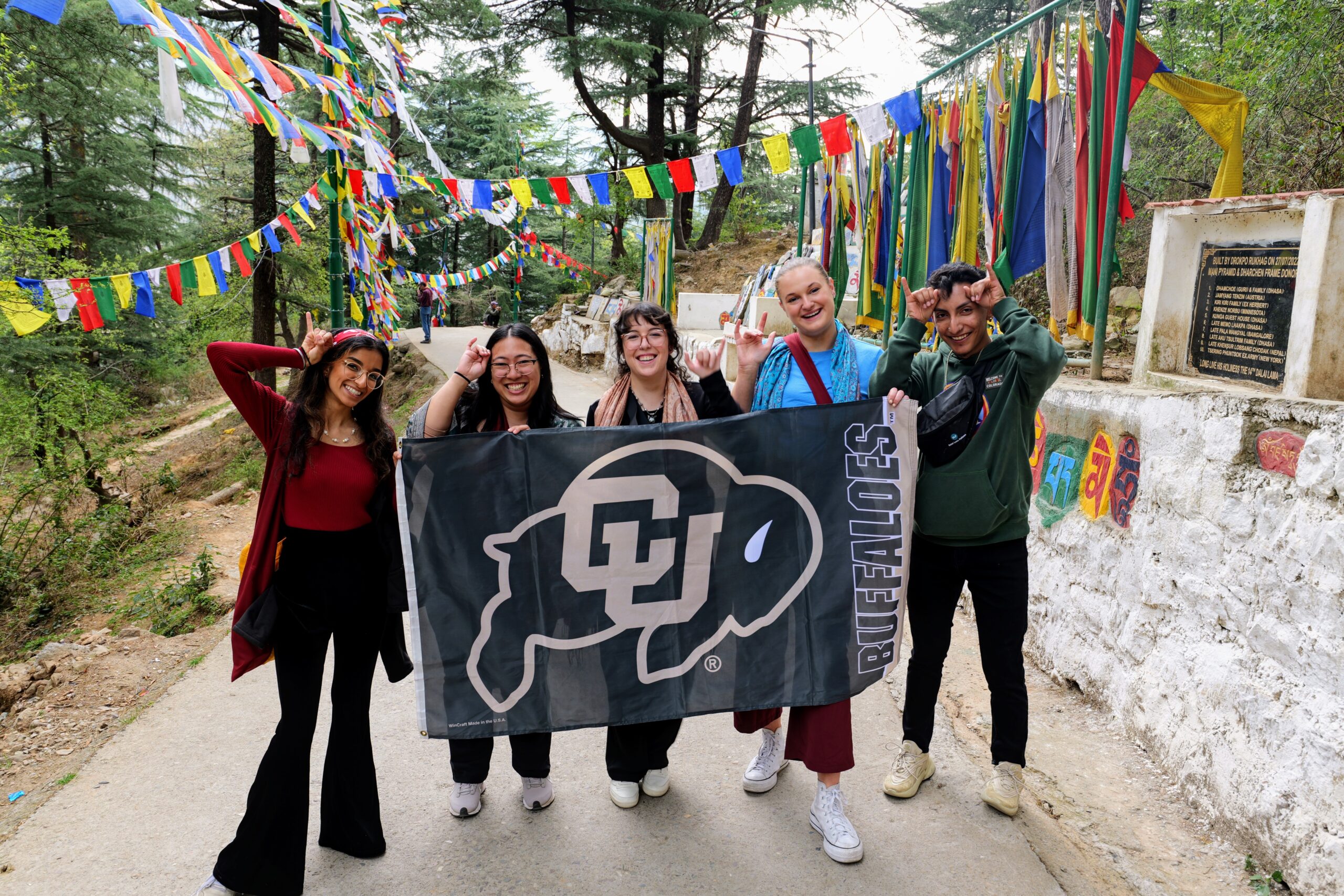On the first two Sundays in October, the American Council on Education ran a full-page ad in the New York Times targeting both presidential candidates with the tagline “Higher Education Builds America.” In what was both a PR campaign and a policy brief, the ACE ad was part of a larger effort to promote higher education’s economic value within a bipartisan message meant to withstand either election outcome. Now that the candidate less likely to embrace their agenda heads to the White House, ACE continues the fight with renewed vigor.
The face of the campaign is ACE president Ted Mitchell, but the person in charge of it is Nick Anderson, former long-time higher education reporter for the Washington Post, now ACE’s vice president for higher education partnerships and improvement. As a former journalist who has observed the highs and lows of a sector considered the bedrock of the American dream, Anderson does not seem defeated or discouraged by the political situation. More than most, he knows that higher education isn’t going anywhere.
While this may be true, innovation in higher education is something Anderson says is part of the campaign’s message. But messaging is different than policymaking, and it remains to be seen how ACE’s left-of-center advocacy agenda performs in the Republican legislative lock-down. In its open letter to candidates, ACE laid out a set of priorities that include increasing federal aid for students and research, repealing the taxability of scholarships, reforming the endowment excise tax, and improving the visa process to better support international students.
As the non-profit’s government affairs professionals work the agenda on Capitol Hill, Anderson and his colleagues will be in forums, and on social and traditional media, getting policymakers and thought leaders to look at the bigger picture.
Here is an excerpt of our interview for LearningWell.
LW: Let’s start at the beginning. What motivated ACE’s new campaign?
We started the campaign a little before September when we were thinking about what to say to the presidential candidates. We wanted to articulate some core principles. We wanted to say to the campaigns: “This is who we are, this is what we do, and here’s what we’d like you to look at when you take office.”
It’s been a rough year for higher education. Arguably, it’s been a rough few years for higher education and yet, here we are, definitely wanting to be part of the conversation – the policy conversation and the political conversation and we’re not going away. Higher education has been part of the country since the beginning, for all of our flaws. We have grown with the country and helped the country grow. And now in the 21st century, we’re here to help it grow some more. In September, we wrote an open letter to the candidates – which was the basis for the New York Times ad – that articulated this vision of our history and our connection to America with a strong message that whoever wins the election we are ready to work with you.
LW: What is it you hope to communicate through the campaign?
From a message perspective, we wanted to draw the big picture for folks. We wanted to step away from the controversies of the moment – and there will always be controversies – and remind people that higher education is simply part of the American story. It has been here from the beginning. Thomas Jefferson went to William and Mary and founded the University of Virginia. Abraham Lincoln signed the Land Grant Act that created land grant institutions throughout the country. There’s the establishment of the HBCU’s, the national enterprise of the community college movement, the GI Bill, the Higher Education Act of 1965, the Pell Grant and on and on. This historical through line of higher education is something we need to really emphasize to President Trump now and to Congress.
We are not a sector that sprang up yesterday. We are here and we have always been here. When you talk about national security, when you talk about public health and medicine and lifesaving medical breakthroughs, when you talk about the regional economies of this country and the national economy, we have always built America and we will keep on building. These are the kind of big picture messages we want to advance because, frankly, that often gets lost in the public narrative.
“We have always been part of the American story”
LW: Is ACE concerned about the election of Trump and the anti-higher education rhetoric his campaign employed?
The rhetoric around the campaign season can get pretty heated, but there are campaigns and then there is governing. We’ll see what all this means. Trump hasn’t taken office yet. The new Congress hasn’t been sworn in. We are extending our hand to every national leader from the president to the Senate majority leader, the Senate minority leader, the House speaker, the House minority leader. We obviously will stand up for ourselves but wherever there is opportunity for advancing, we will advance.
Regarding the attack on higher ed, I would say we are big enough to weather critiques. If there are people outside or inside of higher ed who are labeling us as “woke” or “elitist” or any particular adjective, we have to reckon with that. What does that mean? I would argue that we can absorb those critiques and evolve and take necessary steps if need be, but, more importantly, we need to simply be there and listen so that people understand that higher ed is hearing them. We have to avoid being defensive. We are institutions that promote, elevate and value the marketplace of ideas and political debate. As such, we have to be big enough to absorb any criticism and listen to it. At the same time, we have to continue to promote our values. We value academic freedom. We value free speech. And we value institutional autonomy.
LW: As part of the campaign, you acknowledge the need for change along with the value that higher ed brings. What are some examples of that?
We have real work to do on the affordability front. I think it’s two things at the same time. There’s plenty of data that shows that college opportunities are affordable and available in many ways and we need to do a better job at communicating that. We are champions of access and champions of policies that promote affordability. We are champions of the Pell Grant. We are champions of the Free Application for Federal Student Aid, which had a disastrous year, but it’s now on the road to getting better.
We want very much to promote the message that college is affordable, and yet we know that there are things that must be done to make it more affordable to more people and to have the value of college be elevated so that families, when they’re thinking about making a significant investment of money, and time, that they think it’s worth it.
I also want to be crystal clear that what we’re saying here is meant to be maximally inclusive and has relevance for those who choose not to go to college. Your life could have many paths that intersect with college at different points. Our fixation with the education of 18 to 22 year olds is well grounded because we all care about our children and their emergence as adults in the economy and in their communities. But that traditional pathway has been shown many times to be too narrow to define what higher education is. There are a lot of people who intersect with higher education after age 25, and we need to capture that in our conception of who we are.
LW: What changes to do you see coming?
The sector is really a vast field of institutions and I think there’s a real value in partnerships between different types of institutions – community colleges and research universities, for example. Universities are an obvious example of fertile ground for partnerships and coalitions that would bring home to average folks that, “Hey, I’ve got college everywhere available to me. It’s not just that distant state flagship or those private universities off on the coast somewhere.” Promoting community colleges and the wonderful work that they do and their accessibility is critical to that. But promoting the linkages between colleges that can be very different is really essential as well.
We also have to promote different modalities. Online education is here to stay. It’s not the enemy, it’s part of our fabric right now. I think the pandemic accelerated that and raised some questions about how it fits with residential higher education, but there’s no question that online higher education is real and important and potentially a crucial area for higher education to expand access to more Americans. There’s also a really important movement of credit for prior learning that we are very interested in helping to integrate into our thinking about higher education. Innovation is part of higher education. To go back to my theme, I want to emphasize to the thought leaders and policymakers the vastness of who higher education is, what higher education is.
LW: You have covered higher education for many years. What is your observation about the state of higher education today?
I literally covered higher ed directly for the Washington Post for 12 years. And every one of those years there were burning issues that were perceived in some way as an existential crisis for higher ed. And in the last decade there have been plenty of crises of the moment. Certainly Covid was an existential crisis. There were crises related to “Me too” scandals and questions about sexual misconduct and sexual assault on college campuses that were really crucial to acknowledging the age-old problems of securing safety for students and creating an environment free of harassment and free of intimidation. The last year seemed to have very acute challenges, with the protests (over the war in Gaza) and the congressional hearings, but it’s not the first time that colleges have been rocked by challenges.
LW: What excites you about this new role?
I spent a couple of decades covering education and now I’m fighting for it. That, for me, is a wonderful pivot. There’s a lot of work to do. People in this country care about the American dream and getting ahead. And I think they also care about the free exchange of ideas and all those good things that higher education provides for us.


